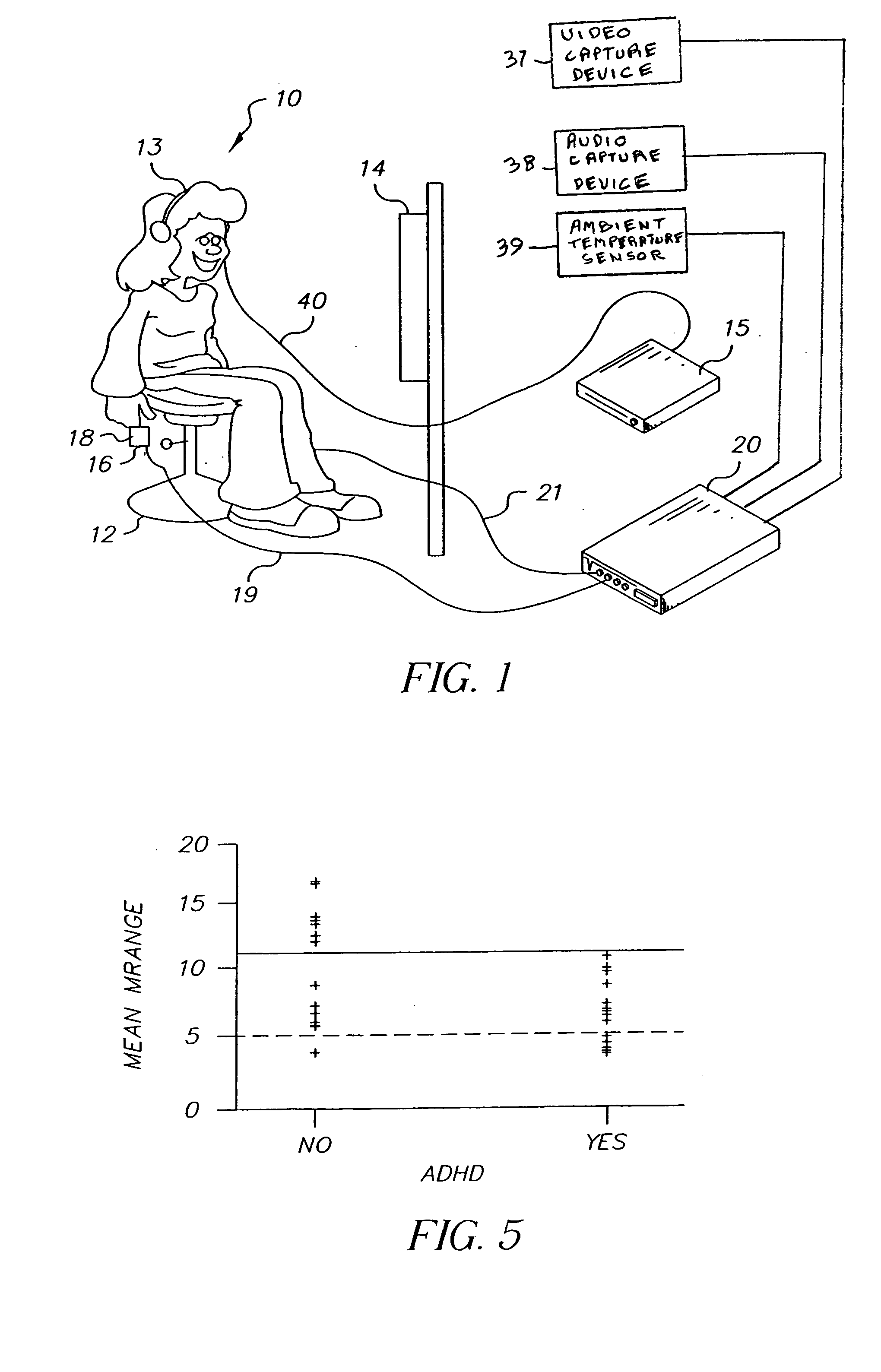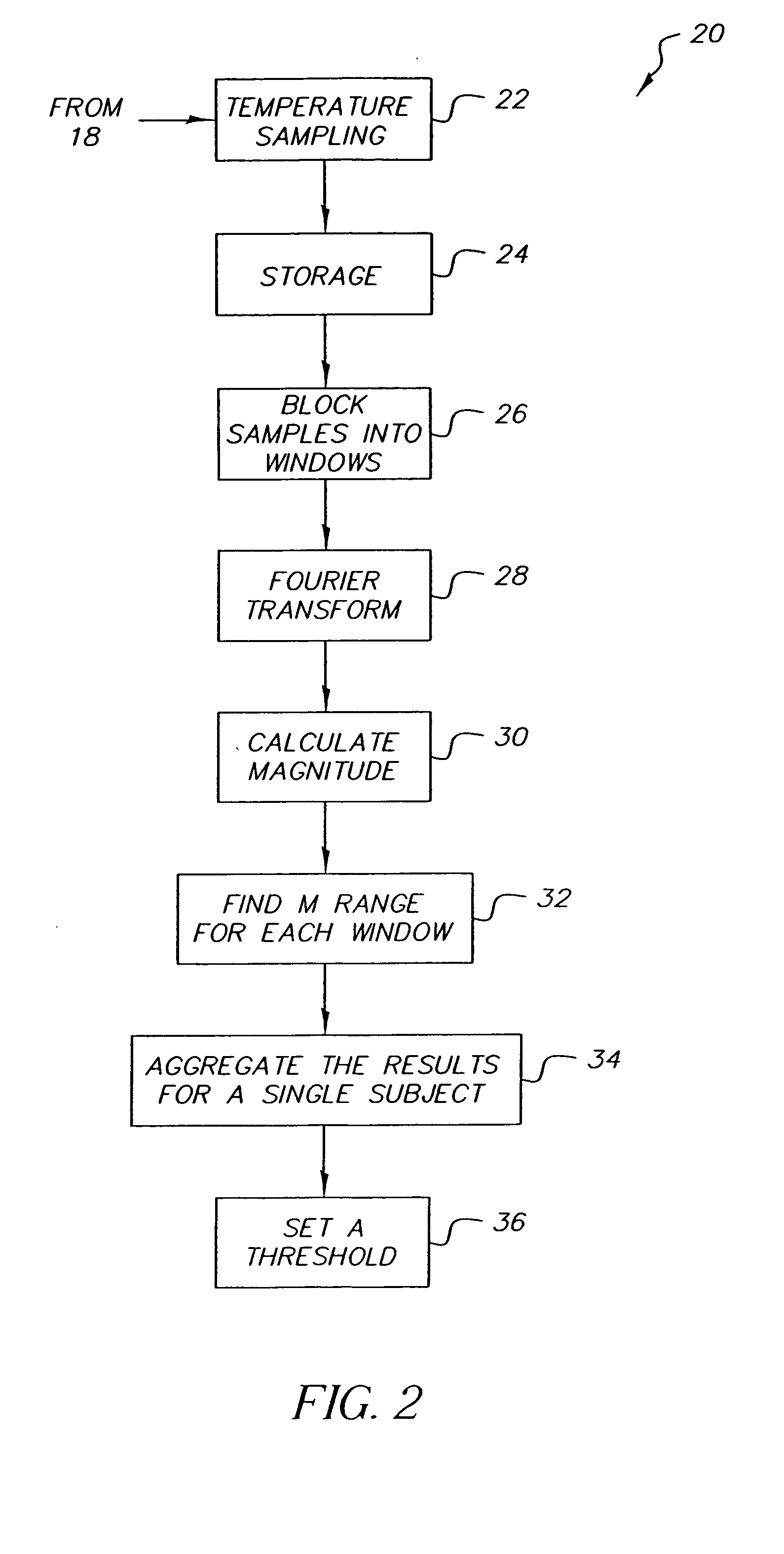Technique for diagnosing attention deficit hyperactivity disorder
a hyperactivity disorder and attention-deficit disorder technology, applied in the field of attention-deficit hyperactivity disorder diagnosis, can solve the problems of difficult diagnosis of adhd, school difficulties, and children may experience significant functional problems, and achieve the effect of simple, reliable and inexpensiv
- Summary
- Abstract
- Description
- Claims
- Application Information
AI Technical Summary
Benefits of technology
Problems solved by technology
Method used
Image
Examples
Embodiment Construction
[0029] According to the invention, it has been found that a signature of ADHD is hidden in fluctuation of the temperature of the skin as measured at the extremities such as at a fingertip. It is well known in the art that as person's stress level increases the blood vessels in the body as is evidenced by the fact a person's blood pressure increases as their level of stress increases. As the blood vessels in the body contract, blood flow is restricted. This is most evident in the extremities such as the fingers, because the blood vessels in the extremities are small and furthest from the heart. A direct result of decreased blood flow to the blood vessels in the extremities is a decrease in the peripheral temperature of the extremities. Conversely, as a person's stress level decreases and one relaxes the blood flows also relax and expand causing blood flow to increase. As the blood flow to the vessels in the extremities increases, the peripheral temperature of the extremities increase...
PUM
 Login to View More
Login to View More Abstract
Description
Claims
Application Information
 Login to View More
Login to View More - R&D
- Intellectual Property
- Life Sciences
- Materials
- Tech Scout
- Unparalleled Data Quality
- Higher Quality Content
- 60% Fewer Hallucinations
Browse by: Latest US Patents, China's latest patents, Technical Efficacy Thesaurus, Application Domain, Technology Topic, Popular Technical Reports.
© 2025 PatSnap. All rights reserved.Legal|Privacy policy|Modern Slavery Act Transparency Statement|Sitemap|About US| Contact US: help@patsnap.com



